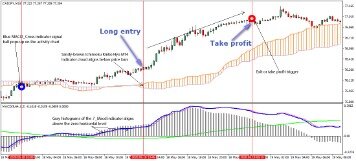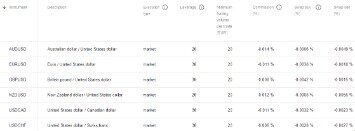Visa or Mastercard: What’s the difference between the credit cards?

Q.ai. Q.ai offers advanced investment strategies that combine human ingenuity with AI technology. Our investment strategies, which we call “Investment Kits,” help investors manage risk and maximize returns by utilizing AI to identify trends and predict changes in the market. Invest in up to 20 stocks and ETFs by adding a single Kit to your portfolio. Our AI will rebalance your investments on a weekly basis to optimize performance.
Anyone can review their past dividend history, alongside other metrics, on Morningstar, a free investing resource. On paper, intelligent investors will need to know critical metrics for each company to start comparing. Keep in mind that both companies report their annual report at different times of the year, but other than that, these metrics will be comparing which company is more robust on paper. Get stock recommendations, portfolio guidance, and more from The Motley Fool’s premium services.
3 Warren Buffett Stocks to Buy Hand Over Fist in July — Nasdaq
3 Warren Buffett Stocks to Buy Hand Over Fist in July.
Posted: Sun, 16 Jul 2023 11:35:00 GMT [source]
While the last two years have been extremely difficult for even the best stocks, Visa and Mastercard have remained steadfast. Visa reports earnings Tuesday, April 25 after the market closes, and Mastercard reports Thursday, April 27 before the market opens. Visa is ranked No. 3 in IBD’s industry group ranking of credit card and payment processors, behind No. 1 Shift4Payments (FOUR). Highly rated companies in IBD’s payment processing group include Square (SQ) and PayPal (PYPL).
The two similar companies are different enough in one way for it to matter.
Visa and Mastercard don’t carry balances on their books, unlike American Express and Discover Financial (DFS). Instead, Visa and Mastercard make money on credit and debit card transaction fees while issuing banks such as JPMorgan Chase (JPM) carry the upside and downside risk. In addition, both companies have been innovative with «Buy Now Pay Later» options offered to consumers, and the BNPL trend is still being reviewed but offers a https://forex-world.net/brokers/lirunex-limited-email-formats-employee-phones/ sizeable new market share. Mastercard announced earlier in the year a «Sustainability Innovation Lab» in Stockholm for the creation of climate-conscious products. Mastercard also generates more of its revenue from markets outside the U.S. «Post-financial crisis, pre-pandemic, Mastercard grew earnings at a 10-year CAGR [compound annual growth rate] of 20%,» according to Lisa Ellis, a senior research analyst at MoffettNathanson, LLC.
Mastercard’s stock flirts with first new record high in 17 months — Morningstar
Mastercard’s stock flirts with first new record high in 17 months.
Posted: Tue, 11 Jul 2023 18:51:00 GMT [source]
As the chart above illustrates, the company has a significantly lower forward price/earnings-to-growth (PEG) ratio than Visa. Mastercard (MA -0.08%) and Visa (V 0.34%) are two giants of the financial services world and account for a huge portion of the card-based payments market. Read on for differing bull cases from two Motley Fool contributors. While Visa outpaces Mastercard in terms of cards in circulation, net revenue and market share based on purchase transactions, Mastercard’s stock has outperformed Visa’s over the past 5 years. Therefore, I still consider Mastercard to be the slightly better risk and reward choice between the two competitors.
Further Content: You might find this interesting as well
… to incorporate the statistic into your presentation at any time. The Comparison page allows you to view a side-by-side comparison of a stock, ETF, or any other symbol and up to four other symbols. When the page is first displayed, you may see up to https://topforexnews.org/software-development/what-is-crm-a-definition-of-crm-and-its-meaning/ two other symbols already on the comparison page. These symbols are found in the same sector, and have the two largest market caps in that sector. However, higher costs — personnel costs and professional fees — resulted in expenses for the company.
- While American Express and Discover have historically had smaller networks internationally, Visa is accepted by 46 million merchants worldwide and Mastercard boasts comparable numbers.
- At Mastercard’s current stock price of $369.00, my DCF Model indicates an Internal Rate of Return of about 12% for the company.
- You would be hard-pressed to find many companies with operating profit margins this high.
- The objective of this article was to show that both Visa and Mastercard are excellent choices for (dividend growth) investors.
- It would be foolish not to consider the sheer difference between Mastercard credit card holders compared to Visa.
«We delivered strong revenue and earnings growth this quarter, reflecting resilient consumer spending and the continued recovery of cross-border travel, » said Mastercard CEO, Michael Miebach. Payment processing firms Visa (V) and MasterCard (MA) are two of the largest credit card companies in the world. Between them, the duopoly accounts for a whopping 64 percent of the global consumer financing market, https://currency-trading.org/cryptocurrencies/drew-lisk-stats-news-bio/ with almost half of all Americans owning at least one Visa card in 2020 alone. The first metric we can analyze is the net profit margin which is the ratio of profit a company earns to the total amount of revenue that is generated. Visa’s profit margin is 51.1% in 2021 compared to Mastercard’s percentage standing at 46% for 2021. Another key metric is revenue percentage changes year-over-year.
Visa vs. Mastercard: Who had a stronger quarter?
It averaged 24% earnings growth and not quite 17% growth in revenue over the past three quarters. International transaction revenue bolted 24% to $2.75 billion, slightly higher than forecasts of $2.735 billion. Data processing revenues increased 10% to $3.82 billion, shying out projections of $3.77 billion.
- Only 62% of people in the United Kingdom currently own a credit card, according to data from The World Bank, while in Germany the figure’s less than 57%.
- And this nuanced difference favors a position in Mastercard over Visa.
- Both are publicly traded and are integral pieces of the credit card industry.
- Credit card competitor American Express (AXP) reported a 12% earnings slump, to $2.40 per share, in its Q1 report last Thursday, missing estimates of $2.66 per share.
Visa has lost about 6% in the past six months and closed the day’s session lower. Many of the things that make Visa great also apply to Mastercard. Consistently shrinking share count, discounted valuation, and benefits from inflation. In fact, Mastercard has bested Visa in stock performance over the last decade. Because the fees vendors pay to Visa are percentage based, a rise in inflation has led to a direct rise in revenue.
Dow Jones Up, Tesla Pops As Elon Musk Gets Targeted; 3 Warren Buffett Stocks Are Near Buy Points
MA offers a dividend yield of 0.6%, which has increased by an average of 17% annually over the last five years. The share count has declined by 22% over the last ten years thanks to consistent share buybacks. Additionally, the dividend payout has been raised from $0.40 in 2014 to $1.58 per share today.
«For context, earnings growth of the S&P, market overall is like in the high single digits.» At Mastercard’s current stock price of $369.00, my DCF Model indicates an Internal Rate of Return of about 12% for the company. As per the estimates, MA is poised for strong gains this year – as much as 25% in the next twelve months. Analysts following Mastercard unanimously recommend buying the stock, reflecting the upbeat market sentiment. The stock entered 2022 on a high note and hit a new high in the early weeks of the year, before losing a part of the momentum and retreating to the pre-peak levels.

That crisis, sparked by SVB Financial’s Silicon Valley Bank collapse, sent shock waves through financial markets. It also forced regulators to scramble for emergency relief and prompted calls for stricter legislation for the industry. The historical evolution of the MA and V AI Scores can be useful to analyze the correlation of the scores with the actual performance of the stocks. Comparing the MA and V AI Scores evolution can also help understand their market momentum.
These are high expectations for the financial processing giant as many premier companies have projected more tepid estimates, making it easier for companies to reach expectations. However, if Visa can meet or exceed expectations, it should be a very bullish catalyst. Bite-size important facts and numbers about the markets, the world around us, and what it all means for you, written in simple language with a bit of humor.

Simply put, Visa holds the larger market share regarding financial transactions. Visa and Mastercard generally earn a small percentage every time a consumer swipes their credit, debit, or prepaid card. The key metric to their profits is how many transactions they process annually.
Visa Outlook
Clearly, Mastercard has demonstrated its prowess in the market and continued its upward trajectory. While American Express and Discover have historically had smaller networks internationally, Visa is accepted by 46 million merchants worldwide and Mastercard boasts comparable numbers. Mastercard’s stock traded lower on Thursday afternoon and hovered near the $350-mark, which is close to the levels seen six months ago.

«Things have been completely normal,» Visa Chief Financial Officer Vasant Prabhu said at the Wolfe Research conference on March 15. «Debit and credit cards have been usable, without any disruption whatsoever. They’re settling every night. So, really, no impact whatsoever.» Shares of Visa and Mastercard are trading lower Wednesday following a report that lawmakers are circling back to proposed legislation that could bring down credit card fees. On the surface, Mastercard (MA -0.08%) and Visa (V 0.34%), look similar enough as companies. They’re both just credit card middlemen, collecting a small percentage of the transaction every time a customer makes a card-based purchase.